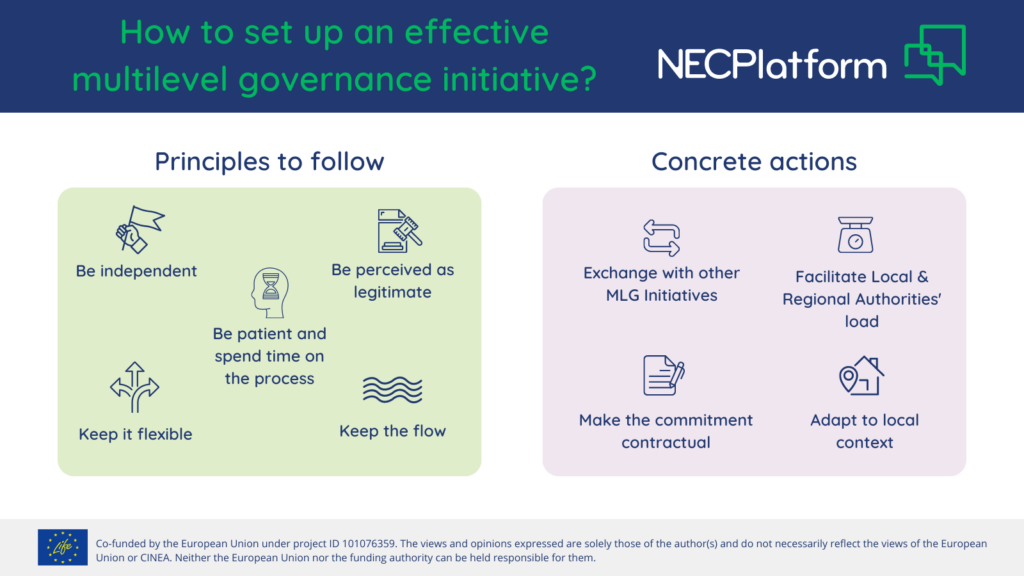After submitting their first NECPs in 2019, following the adoption of Fit-for-55 and RepowerEU, EU Member States are required to update their National Energy and Climate Plans (NECP) by June 2024. In the assessment of the first plans, however, the European Commission observed a lack of alignment between national plans and regional/local ones. With the LIFE NECPlatform project, we support six Member States in implementing Climate and Energy Dialogue platforms, a forum where all relevant parties can meet and contribute to the co-creation of the plans, contribute to make the next NECPs a participatory exercise plan to which important stakeholders and lower administrative levels can relate.
The European Commission, via its Governance Regulation, asks EU member states to prepare or update their National Energy and Climate Plans by June 2024. In particular, under Article 11, the Directive encourages member states to “establish a multilevel energy and climate dialogue […] to engage and discuss the different scenarios envisaged for energy and climate policies”, in which NECPs should be discussed and concerted with all relevant parties. By the end of this 30-month project, six Climate and Energy Dialogues will have taken place in each of the six Member States (Bulgaria, Croatia, France, Italy, Portugal and Romania), with the objective to transfer the platform’s ownership to national authorities for their continuation after the end of the project.
To get there, we first had to set the stage; understand each country’s governance structure and explore existing multilevel governance (MLG) initiatives in Europe and beyond to get inspired from.
In this report, we first present the governance structures in the 6 participating member states, and then move on to introducing and describing 21 examples of multilevel governance from the EU and beyond. Analysing these initiatives allowed us to identify common success factors and encountered difficulties, leading us to recommend a set a common successful features for new or existing MLG initiatives:
Successful features of the process’ leader:
- Be independent – politically and financially.
- Be perceived as legitimate – involve trustworthy stakeholders.
- Be patient and spend time on the process – if proceeding block-by-block or house-by house is what it takes.
- Be flexible – keep leeway to adapt to the unexpected.
- Be persistent – keep the process in a flow: inertia can be a fierce enemy as it can be a powerful ally!
Concrete actions to take:
- Exchange with other multilevel governance initiatives – learn from your peers’ mistakes, successes and share yours!
- Facilitate local and regional authorities’ administrative load – make in sort that your initiative fits in their constrained budget and timetable.
- Make the commitment contractual – it secures the process for everybody and facilitates potential funding.
- Adapt to the local context – know your ground by involving locals.
The identified best practices have been included on Energy Cities’ website in a mapping tool accessible here. In case you would like to submit an initiative to add to the map, you can do it following this link.


